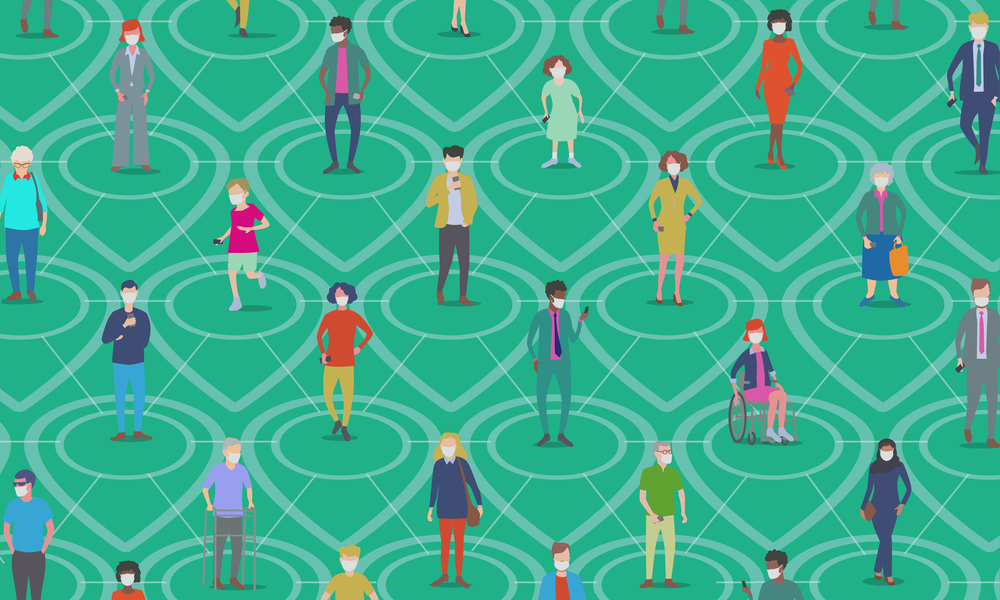
A Return to Meetings: How Contact Tracing Works
As meeting professionals plan for future in-person meetings, they'll need to incorporate new technologies and processes to keep all participants safe. One tool to consider is digital contact tracing. Here's a look at what’s involved.
Although most associations won’t be hosting large in-person meetings in the immediate future, many are thinking about what those face-to-face events will look like when they do return, along with what new technology and procedures they may need to implement to keep all participants as safe as possible.
One new area that meeting professionals will have to consider is contact tracing. For a look at what this involves, I spoke with Julie Ann Schmidt, CMM, CMP, a certified COVID compliance officer and founder and CEO of global events firm Lithium Logistics Group.
“Contact tracing is being able to trace who someone was in contact with before they became sick,” said Schmidt. “For meeting planners, it’s looking at having a conference where, after the fact, you find out somebody was sick and then being able to inform everyone who had contact or may have had contact with that person.”
The CDC defines “close contact” as being within six feet of an infected person for 15 minutes or more over 24 hours.
If you decide to do contact tracing at a conference, you must “first have a mechanism for people to inform you afterward that they got sick at your event, and then [you] need to be able to take that information and tell other participants they may have had exposure,” Schmidt said.
Also keep in mind that an association can’t require people to participate in contact tracing. “Rather, it’s an effort that you’d have to ask attendees and other participants to opt into,” Schmidt said.
There are two ways to handle contact tracing. The first is to use your list of people who checked in onsite. “If that’s all you’re doing, then you’ll have to tell everyone on the list that they may have had contact,” she said.
The second is to use some type of technology that allows you to pinpoint and contact only those who were within six feet of the infected person for 15 minutes or more. “For some groups, the value of not having to worry everyone, of being able to give people more precise information, and maybe manage the PR of it … is worth the investment of going beyond that full list,” said Schmidt.
Contact Tracing options
If you decide to make the investment in contact tracing technology, you’ll be able to choose from among three types:
Radio frequency identification (RFID). This is considered a passive technology because attendees wear a tag or fob—possibly in a wristband—that is constantly on. Sensors are set up around the meeting space, and the technology tracks when a person’s fob crosses a sensor and compares it to other people’s fobs going by the same sensor. (It does not track attendees walking by or standing next to one another throughout the conference venue.) According to Schmidt, RFID is typically the most expensive option. “It can run, based on the last research I did, up to $120 per person, depending on the amount of people you have,” she said. “That includes the individual fobs and sensors.”
Bluetooth low energy (BLE). Like RFID, this is also a passive technology where participants wear a fob. “But, in this case, there are no sensors,” Schmidt said. “Rather, the fobs, which may be in a name badge, are talking to one another so the data shows when attendees are close.” According to Schmidt, this technology is typically in the $10 to $15 range per person.
App. This is considered an active technology because people need to put the app on their phone, and the app and the phone need to be turned on for it to work. “In other words, people can actively turn it off if they want to,” Schmidt said. However, apps usually have the lowest price point, running about $5 per person.
Data Privacy Concerns
All of these technologies collect the same data. “They are measuring time and distance,” Schmidt said.
Most importantly, the collected data is confidential. “When attendees sign up for the app or other contact-tracing program, it puts them in the system as a number,” she said. “So planners don’t know who these individuals are.”
It’s not until an attendee informs the organization that they are sick that staff can put their name into the system and learn who that attendee had been in contact with. “That’s the only point that you know the data tied to a specific person,” she said.
The technology also does not track where people go throughout the day. “It’s not GPS,” Schmidt said. “It’s not tracking the person; it’s tracking their contact.”
Ultimately, the decision to use digital contact tracing comes down to three things: budget, buy-in from participants, and risk management.
“To me, being able to do digital contact tracing, rather than using you’re checked-in registration list, is going a step further and beyond the basics to keep people safe,” Schmidt said.
This is the first piece of a three-part series about meetings post-COVID. In part two, I’ll look at what onsite screening and testing procedures may entail. And in part three, I’ll discuss COVID protocol documents that meeting professionals should put together.
(smartboy10/DigitalVision Vectors)






Comments